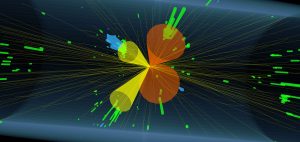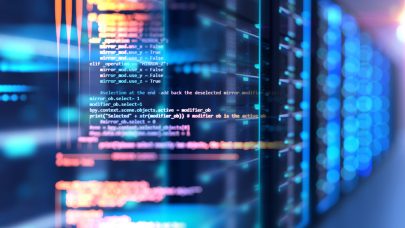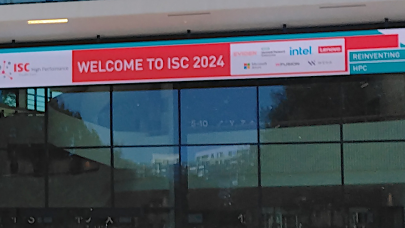Feb. 21, 2024 — An international cohort of the Institute for Research and Innovation for Software High Energy Physics (IRIS-HEP) received some welcome news recently when the U.S. National Science Foundation’s Office of Advanced Cyberinfrastructure and Physics Division awarded it $25 million for another round of research funding. Included among the collaborating institutions is the San Diego Supercomputer Center (SDSC) led by UC San Diego Professor of Physics Frank Würthwein, an expert in distributed high throughput computing and experimental particle physics.

“We are excited that the National Science Foundation, our proposal reviewers and the particle physics community have recognized the significant progress we have made in the first five years and endorsed our plan for the next five years,” said Peter Elmer, a senior research physicist at Princeton and the principal investigator and executive director of IRIS-HEP, a software institute headquartered at the Princeton Institute for Computational Science & Engineering.
IRIS-HEP provides key services for distributed high throughput computing (dHTC) through the OSG Consortium, an integrated open-source software stack and a fabric of services for researchers and research organizations to accelerate their research via dHTC.
“Within its scope, IRIS-HEP provides the domain-specific contribution to the OSG Consortium for the Large Hadron Collider (LHC) community, R&D on new algorithms and the data infrastructure needed to support the exabyte of data expected to be produced annually by the LHC in the 2030s. Researchers at UC San Diego play leadership roles on projects in all three of these areas of IRIS-HEP,” said Würthwein, who also directs the OSG Consortium.
“The highly demanding computing and data requirements expected by the next LHC phase such as storing, transferring and processing half an Exabyte per year propose a challenge that is far from being met by the estimated performance gains from future hardware enhancements. IRIS-HEP’s goal is to close this gap by making software algorithms more efficient and, with the help of OSG, implementing innovative cyberinfrastructure techniques for a better use of the available resources,” said SDSC Scientific Software Developer and Researcher Diego Davila.
According to Saul Gonzalez, director of NSF’s Physics Division, the amount of scientific data expected to be produced by the High-Luminosity LHC is staggering. “The innovative software and data analysis tools being developed by IRIS-HEP will allow researchers to find those ‘needles’ of discovery that unlock new understanding of our universe — and which would otherwise remain hidden in a haystack of data.”
The collaborators and subawardees of this project include: the University of Wisconsin Madison, the University of Washington, Stanford University, the Morgridge Institute for Research, Inc., the University of Notre Dame, the University of Chicago, Indiana University, Cornell University, the University of Cincinnati, the University of California Berkeley, UC San Diego, the University of Nebraska Lincoln, the University of Texas at Austin, the University of Michigan and the University of Puerto Rico Mayaguez.
IRIS-HEP Accomplishments (2018-2023)
- Advanced Data Processing Algorithms: IRIS-HEP has pursued multiple R&D paths for a key pattern recognition challenge charged particles each year in a real-time environment. Initial software has been deployed to the current LHC data taking.
- Extreme Data Science: IRIS-HEP has played a key role in building a cutting edge High Energy Physics (HEP) community python ecosystem for data science had more than 40 active participants. LHC experiments are already using these tools to perform analysis for publication.
- Distributed Data Management: The institute is working to enable the LHC community to modernize how it moves data across the globe. IRIS-HEP spearheaded the migration from older, niche transfer protocols to using industry-standard HTTPS for data distribution.
- High Throughput Computing and Facilities: IRIS-HEP supports the services run by the OSG Consortium and used by the LHC. These services provide a backbone for today’s distributed high-throughput computing infrastructure and are evolving to prepare for the scale of tomorrow’s HL-LHC.
- Software Skills Training: More than 2,000 people have participated in basic software development skills training events organized by IRIS-HEP and taught by more than 60 educators and more than 120 contributors since 2020. IRIS-HEP also sponsors the more advanced (in-person) Computational and Data Science for High Energy Physics (CoDaS-HEP) summer school, with typically 50 participants and 10 instructors per year, in 2019, 2022 and 2023.
- Community: IRIS-HEP plays a key role as intellectual hub for software efforts in the particle physics community: it has organized numerous community workshops which foster discussion, build collaborations and forge consensus around software efforts to meet the challenges of experimental particle physics in the coming years.
- IRIS-HEP Fellows: 122 students participated in the IRIS-HEP Fellowship program over the first 5 years connecting undergraduate and graduate students with mentors in the larger High Energy Physics (HEP) community and the Computational/Data Science community. The fellows spent several months working with mentors to build their skills while working on IRIS-HEP-relevant research software projects. A number of students from the program have gone on to continue their studies as graduate students in HEP and computer science.
- Outreach: IRIS-HEP supported and trained more than 60 high school teachers in the summer of 2023 in Coding Camps across the U.S .including at Fermilab, the University of Alabama, Rice University, the University of Washington, and the University of Puerto Rico. The Coding Camps supported by IRIS-HEP began in the summer of 2022 with a single coding camp at FNAL with about ~25 teachers and has grown from there. Outside of the Coding Camps, IRIS-HEP trained over 110 teachers over the past few years.
Source: Cynthia Dillon, SDSC

























































